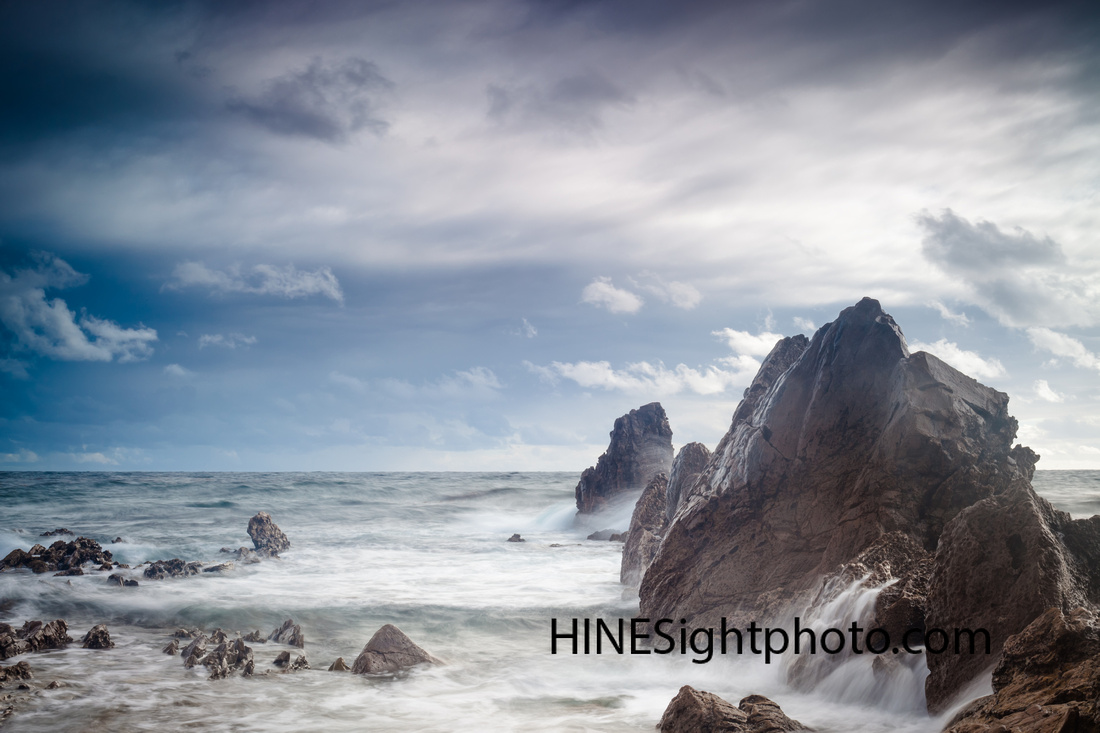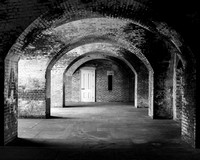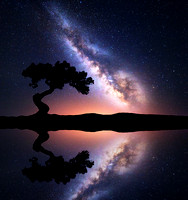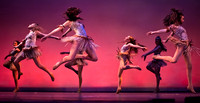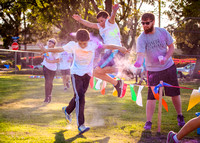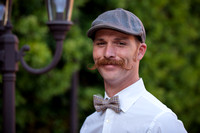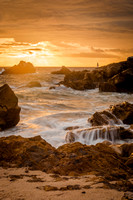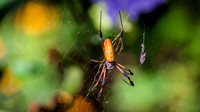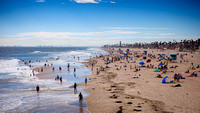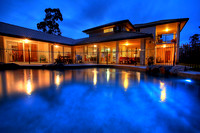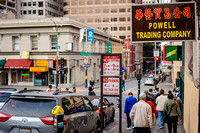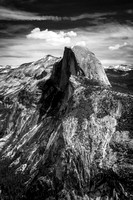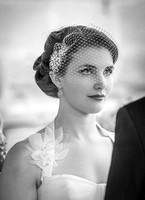Elevate your photography game with time-tested composition methods.
A HISTORY OF COMPOSITION:
As a beginner in photography, it's essential to understand that creating the perfect shot goes beyond just pressing a button. Composition is a fundamental principle of art and photography that plays a crucial role in telling the image's story. By carefully arranging visual elements such as line, shape, color, texture, and space, an artist can create a sense of balance, harmony, and visual interest within the artwork.
The history of composition dates back to at least the late 18th century, with the rule of thirds being a widely recognized principle. However, the concept has been explored by artists for centuries, with the golden ratio being one of the most fundamental principles of art and mathematics. It's important to understand these principles and remember they are just guidelines. With practice and experimentation, you can find your unique style and approach to composition in photography.
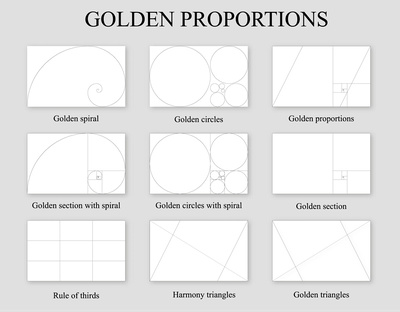

Applying the Golden Ratio and the Rule of Thirds in photography allows you to create visually compelling and emotionally resonant images. Whether you are capturing a landscape, portrait, or product, it's essential to consider the placement of the critical elements of the composition along the lines or at their intersections. For example, remember to position the horizon line along the upper third of the frame if the focus is on the land and the lower third if the focus is on the sky. For portrait photography, position the subject's eyes at one of the intersections of the grid created by the Rule of Thirds, and align their body along one of the vertical lines.
Remember that composition is a fundamental principle of photography that takes practice and patience to master. So keep experimenting and learning, be bold, break the rules, and find your unique style. With hard work, dedication, and a willingness to learn, you can achieve your photography goals and create powerful, engaging images that tell a story.
A BEGINNER'S GUIDE TO COMPOSITION:
Abstract Photography:
- Abstract photography focuses on creating unique and imaginative images through color, texture, and shape.
- The goal is to create a sense of mystery and intrigue in the viewer, allowing them to interpret the image in their way.
- Experimentation and creativity are essential in abstract photography, with techniques like blurring, cropping, and close-ups used to create unique and exciting images.
- Pay attention to the details and try to find beauty in the ordinary. Look for patterns, textures, and shapes that can be highlighted and transformed into abstract compositions.
- Use light and shadow to create depth and contrast, and consider using filters or editing software to enhance the final image.
- Don't be afraid to take risks and try new things. Abstract photography is about breaking the rules and creating something unique and beautiful.
Aerial Photography:
- Look for interesting patterns and shapes from a bird's-eye view.
- Consider using symmetry and repetition to create striking compositions.
- Use a polarizing filter to reduce glare and improve color saturation.
- Experiment with different angles and compositions to capture unique perspectives.
- Pay attention to the quality of light and shoot during the golden hour (early morning or late afternoon) for warm, soft light.
Architecture Photography:
- Look for interesting lines, shapes, and patterns in the building's design.
- Consider using a wide-angle lens to capture the entire building or a telephoto lens to highlight specific details.
- Pay attention to the quality of light and consider shooting during the golden hour or blue hour (just before sunrise or after sunset) for dramatic lighting.
- Look for exciting reflections or shadows to add visual interest to the shot.
- Experiment with different angles and compositions to find the most exciting perspective.
Astrophotography:
- Use a sturdy tripod to keep the camera stable during long exposures.
- Use a wide-angle lens with a large aperture to capture as much light as possible.
- Look for exciting foreground elements to add depth and interest to the shot.
- Use a remote release or self-timer to avoid camera shaking during long exposures.
- Pay attention to the phase of the moon and consider shooting during a new moon for the darkest skies.
Black and White Photography:
- Pay attention to the contrast and tonal range of the subject being photographed.
- Look for interesting textures and patterns that stand out in black and white.
- Use a medium aperture to create a significant depth of field and keep the entire subject in focus.
- Pay attention to the lighting and use reflectors or diffusers to control the shadows.
- Experiment with different angles and compositions to find the most exciting perspective.
Commercial Photography:
- Consider the message you want to convey with the image and how it will be used.
- Pay attention to the advertised product or service and how it can be presented most compellingly.
- Look for interesting angles, lighting, and compositions to create visually striking images.
- Consider using models or actors to add life and energy to the shot.
- Please pay attention to the background and ensure it complements the advertised product or service.
Dance Photography:
- Use a fast shutter speed to freeze motion and capture the movement.
- Use a telephoto lens to capture the dancer in close-up shots.
- Look for interesting angles and compositions to create visually compelling images.
- Use natural light or off-camera flash to create a dynamic atmosphere.
- Please pay attention to the background and ensure it complements the photographed dance.
Event Photography:
- Be prepared for unexpected moments and capture candid shots.
- Pay attention to the context and background to add depth and meaning to the shot.
- Use a fast shutter speed to freeze motion and capture the action.
- Look for interesting angles and compositions to create visually compelling images.
- Consider using flash to improve the lighting in low-light situations.
Fashion Photography:
- Pay attention to the modeled clothing and accessories and how they can be presented most compellingly.
- Look for exciting poses and angles to create visually striking images.
- Use a variety of lenses to capture full-length, half-length, and close-up shots.
- Pay attention to the lighting and use reflectors or diffusers to control the shadows.
- Consider using a model with an attractive face or unique features to add character to the shot.
Food Photography:
- Pay attention to the presentation of the food and how it can be presented in the most appetizing way.
- Use natural light or diffused light to create soft, even lighting.
- Look for interesting angles and compositions to create visually appealing images.
- Please pay attention to the background and ensure it complements the photographed food.
- Consider using props or accessories to add interest and context to the shot.
Headshot Photography:
- Use a telephoto lens to capture the head and shoulders of the subject.
- Use a medium aperture to create a considerable depth of field and keep the entire face in focus.
- Consider the background and try to choose a simple, uncluttered setting.
- Look for interesting angles and compositions to create visually compelling images.
- Pay attention to the lighting and use reflectors or diffusers to control the shadows.
Landscape Photography:
- Consider the Rule of Thirds when positioning the horizon line.
- Look for exciting foreground elements to add depth to the shot.
- Use a small aperture to create a considerable depth of field and keep the entire scene in focus.
- Pay attention to the quality of light and consider shooting during the golden hour (early morning or late afternoon).
- Experiment with different angles and compositions to find the most interesting perspective.
Macro Photography:
- Use a macro lens to capture small details up close.
- Use a small aperture to create a significant depth of field and keep the entire subject in focus.
- Use natural light or off-camera flash to create soft and even lighting.
- Look for interesting angles and compositions to create visually compelling images.
- Use a tripod or other stabilizing device to avoid camera shake.
Newborn Photography:
- Use a macro lens to capture the small details of the newborn.
- Use soft, diffused lighting to create a warm and inviting atmosphere.
- Look for interesting angles and compositions to create visually compelling images.
- Use props such as blankets, baskets, or hats to add visual interest to the shot.
- Pay attention to the newborn's safety and comfort throughout the shoot.
Pet Photography:
- Use a fast shutter speed to freeze motion and capture the action.
- Use a telephoto lens to capture the pet in close-up shots.
- Get down to the pet's level for more engaging and intimate shots.
- Look for interesting angles and compositions to create visually compelling images.
- Use treats or toys to get the pet's attention and create a more animated expression.
Photojournalistic Photography:
- Capture candid moments and emotions to tell a story.
- Look for exciting moments and events that capture the mood of the story.
- Pay attention to the context and background to add depth and meaning to the shot.
- Consider using a wide-angle lens to capture the entire scene or a telephoto lens to capture specific details.
- Be prepared for unexpected moments and capture candid shots.
Portrait Photography:
- Position the subject's face along one of the vertical lines of the Rule of Thirds.
- Place the eyes at one of the intersections of the grid created by the Rule of Thirds.
- Use a wide aperture to create a shallow depth of field and blur the background.
- Consider the background and try to choose a simple, uncluttered setting.
- Play with different angles and poses to add visual interest to the shot.
Product Photography:
- Use a light tent or softbox to create soft and even lighting.
- Use a medium aperture to create a considerable depth of field and keep the entire product in focus.
- Look for interesting angles and compositions to create visually compelling images.
- Please pay attention to the background and ensure it complements the photographed product.
- Consider using props or accessories to add interest and context to the shot.
Real Estate Photography:
- Use a wide-angle lens to capture the entire room and create a sense of space.
- Use natural light or off-camera flash to create a bright and inviting atmosphere.
- Look for interesting angles and compositions to create visually compelling images.
- Ensure the background complements the photographed property.
- Consider staging the room with props and accessories to add visual interest to the shot.
Sports Photography:
- Use a fast shutter speed to capture the action.
- Anticipate the moment and be ready to capture it.
- Consider burst mode to capture a series of shots in rapid succession.
- Use a telephoto lens to get closer to the action.
- Include surroundings to give context to the shot.
Still Life Photography:
- Use a light tent or softbox to create soft and even lighting.
- Use a small aperture to keep the entire subject in focus.
- Look for interesting angles and compositions to create visually compelling images.
- Ensure the background complements the photographed subject.
- Use props or accessories to add interest and context to the shot.
Street Photography:
- Use a wide-angle lens to capture the scene and environment.
- Use natural light or off-camera flash to create a dynamic atmosphere.
- Look for interesting angles and compositions to create visually compelling images.
- Capture candid moments and emotions to tell a story.
- Ensure the background complements the photographed scene.
Travel Photography:
- Use a variety of lenses to capture the different sights and scenes of the location.
- Use natural light or off-camera flash to create a warm and inviting atmosphere.
- Look for interesting angles and compositions to create visually compelling images.
- Ensure the background complements the photographed location.
- Be prepared for unexpected moments and capture candid shots.
Wedding Photography:
- Use a variety of lenses to capture full-length, half-length, and close-up shots.
- Use natural light or off-camera flash to create a warm and inviting atmosphere.
- Look for interesting angles and compositions to create visually compelling images.
- Ensure the background complements the wedding setting.
- Be prepared for unexpected moments and capture candid shots.
Wild Animal Photography:
- Use a telephoto lens to capture the animal from a safe distance.
- Use a fast shutter speed to freeze motion and capture the action.
- Look for interesting angles and compositions to create visually compelling images.
- Ensure the background complements the photographed animal.
- Be patient and wait for the right moment to capture the shot.
CONCLUSION:
As you embark on your journey of capturing the world through your lens, remember that a clear goal is essential for any great accomplishment. Without a vision, it's easy to get lost in the details and lose sight of what you're trying to achieve. So, take the time to define your goals as a photographer and use them as a guiding light to stay focused and motivated.
Challenges and setbacks are inevitable, but how you respond to them will determine your success. In photography, the composition is a fundamental element to master. It's how you arrange the elements in your frame to create a captivating image that tells a visual story.
Be encouraged if you get it right first. Every mistake is an opportunity to learn and grow. As you practice and experiment with different compositions, you'll see patterns emerge, and your skills will improve.
Keep your passion and curiosity alive as you progress on your photography journey. Look for new and exciting ways to capture the world around you. Remember that composition is just one tool in your arsenal, so feel free to break the rules and find your style.
Ultimately, as in life, the key to success in photography is perseverance and a willingness to learn. So as you continue to shoot and explore the world through your lens, never lose sight of your passion and goals. You can achieve anything you want with hard work, dedication, and a willingness to learn. So keep shooting, keep experimenting, and keep growing as a photographer. Your journey has just begun.
I wish you the best of luck on your photography adventure!
Randy
